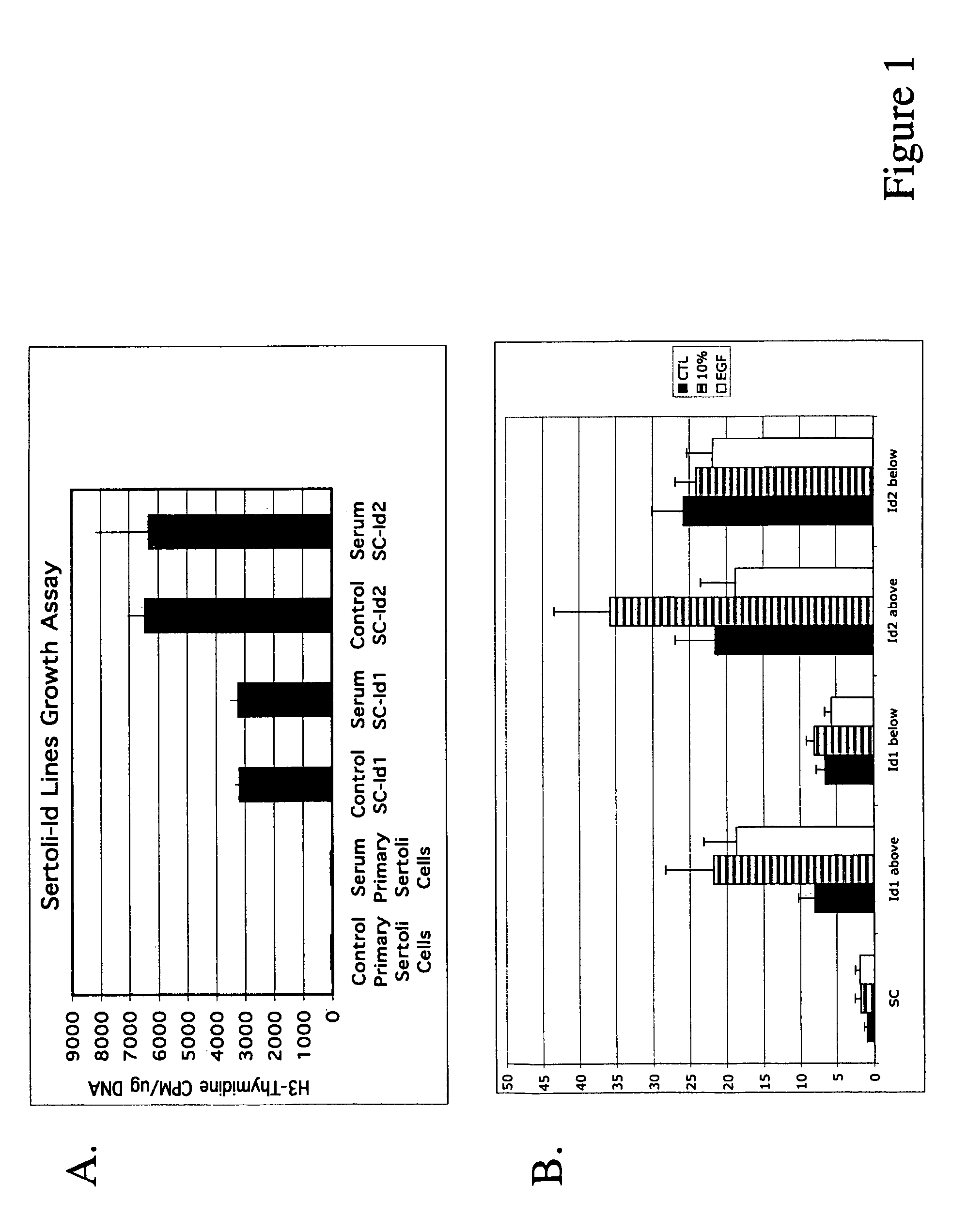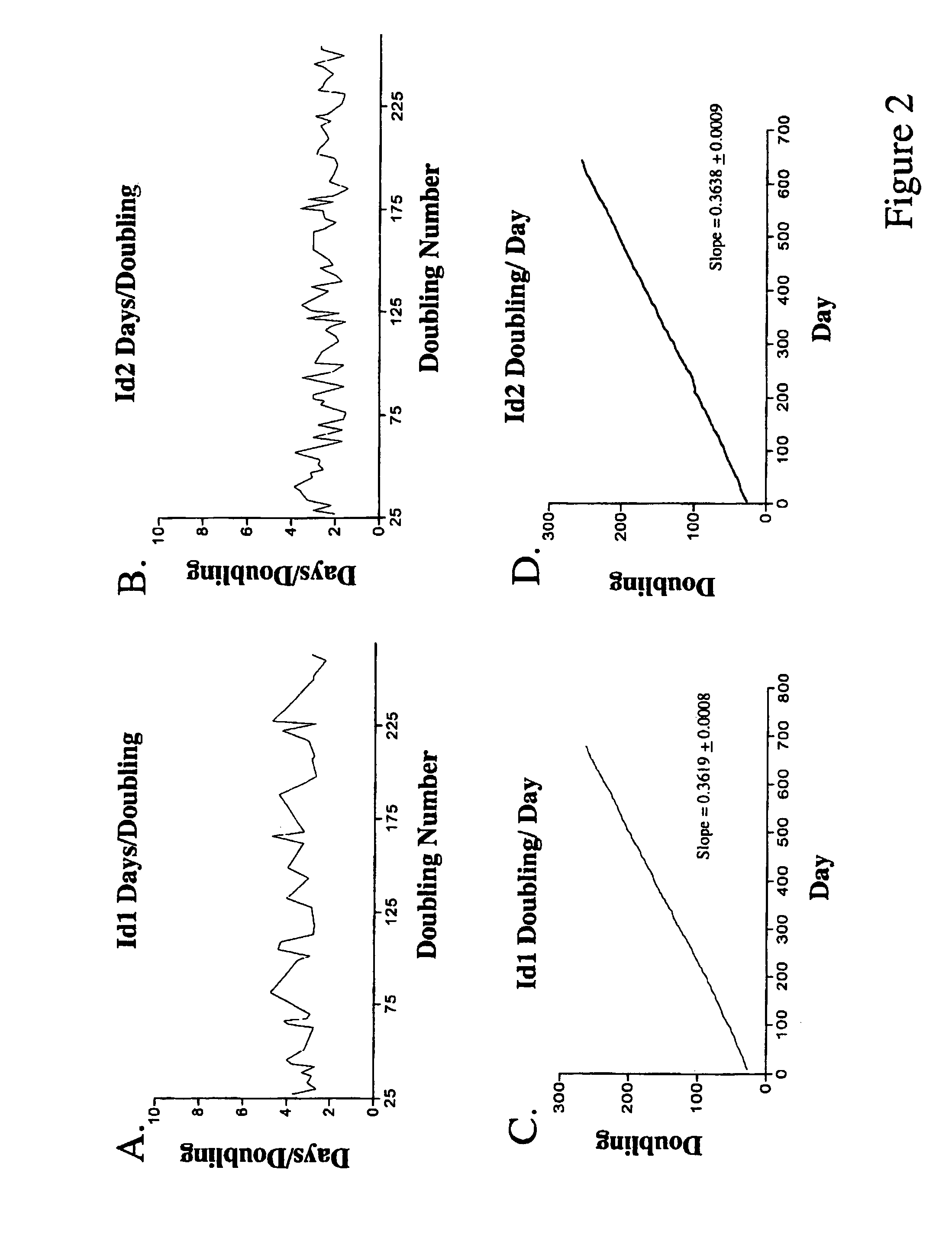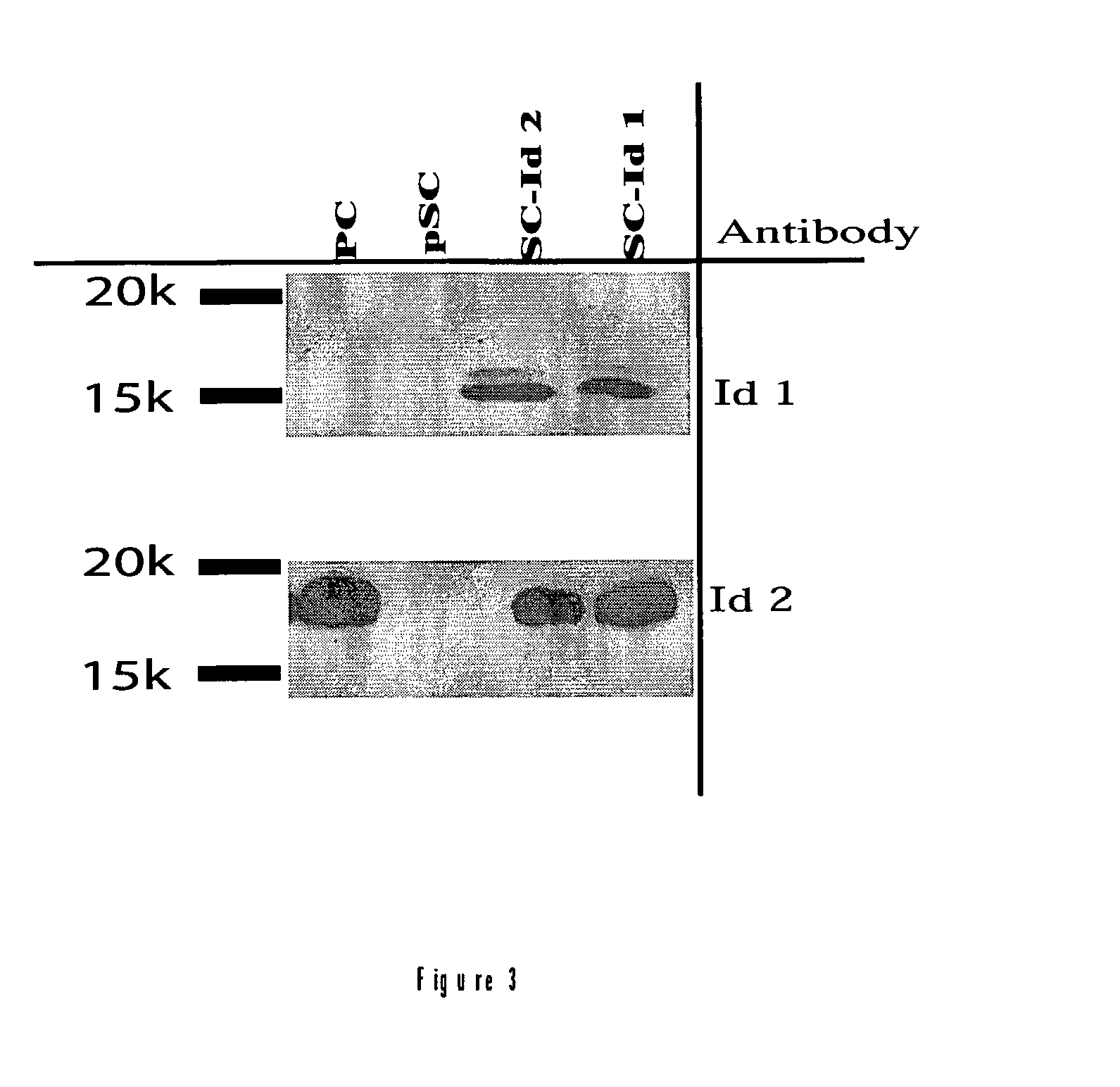Modified cells expressing a protein that modulates activity of bHLH proteins, and uses thereof
a technology of bhlh protein and protein, which is applied in the direction of biocide, genetic material ingredients, drug compositions, etc., can solve the problems of abnormal tissue function, failure to influence cell growth, and transplant rejection of long-term disease relief, so as to enhance the viability of thawing cells
- Summary
- Abstract
- Description
- Claims
- Application Information
AI Technical Summary
Benefits of technology
Problems solved by technology
Method used
Image
Examples
example 1
[0194]The following provides a description of the methods used to isolate Sertoli cells from rats.
[0195]The Sertoli cells were isolated using a modified version of well-known methods (J H Dorrington, et al 1975 Mol Cell Endocrinol 3:57-70; P S Tung, et al 1984 Biol Reprod 30:199-211; Cheng, et al. 1987 J Biol Chem 26:12768-12779). Sterile conditions were maintained throughout the isolation procedure (e.g., a sterile hood was used, when appropriate). All animal use and procedures were approved by the Washington State University Animal Care Committee.
[0196]Sertoli cells were isolated from dissected testes from 50 male, 20 day old rats. The tunica albuginia and testicular vein were removed from each dissected testes. The testes were placed in HBSS medium (Hank's Balanced Salt Solution; catalog no. 14170, Gibco), chopped using a razor, until the tissue appeared homogenously chopped. The chopped testes tissue was transferred to a sterile conical tube containing 5 mls of 2.5% trypsin, 1 m...
example 2
[0201]This Example provides a description of the methods used to generate modified Sertoli cells carrying a heterologous gene sequence encoding an Id1 or Id2 protein.
[0202]Plasmids
[0203]The eukaryotic expression plasmid pCI-neo-Id1 and Id2 were constructed. The human Id1 (GenBank Accession No. NM-002165) and Id2 (GenBank Accession No. NM-002166) sequences were used to design PCR primers which were then used to amplify the full length coding region from RNA extracted from cell lines.
[0204]
Primers:human Id-1 (5′):GCC AAG AAT CAT GAA AGT CGC CAG TGG CAGhuman Id-1 (3″):GGG AGG CGC TTC AGC GAC ACA AGA Thuman Id-2 (5′):CGC GGT CAG CAT GAA AGC CTT CAG TCChuman Id-2 (3′):CAC CGC TTA TTC AGC CAC ACA GTG CTT TGC
[0205]The coding sequences of Id1 and Id2 were obtained through RT-PCR of human cell line RNA. RNA was extracted from human cell lines SKOV3 (ATCC catalog no. HTB77) and OCC1 (W S F Wong, et al., 1990 Gynecological Oncology 38:37-45). The fragments were first subcloned in a pGEM-T-EZ (...
PUM
| Property | Measurement | Unit |
|---|---|---|
| temperatures | aaaaa | aaaaa |
| volume | aaaaa | aaaaa |
| bring volume | aaaaa | aaaaa |
Abstract
Description
Claims
Application Information
 Login to View More
Login to View More - R&D
- Intellectual Property
- Life Sciences
- Materials
- Tech Scout
- Unparalleled Data Quality
- Higher Quality Content
- 60% Fewer Hallucinations
Browse by: Latest US Patents, China's latest patents, Technical Efficacy Thesaurus, Application Domain, Technology Topic, Popular Technical Reports.
© 2025 PatSnap. All rights reserved.Legal|Privacy policy|Modern Slavery Act Transparency Statement|Sitemap|About US| Contact US: help@patsnap.com



